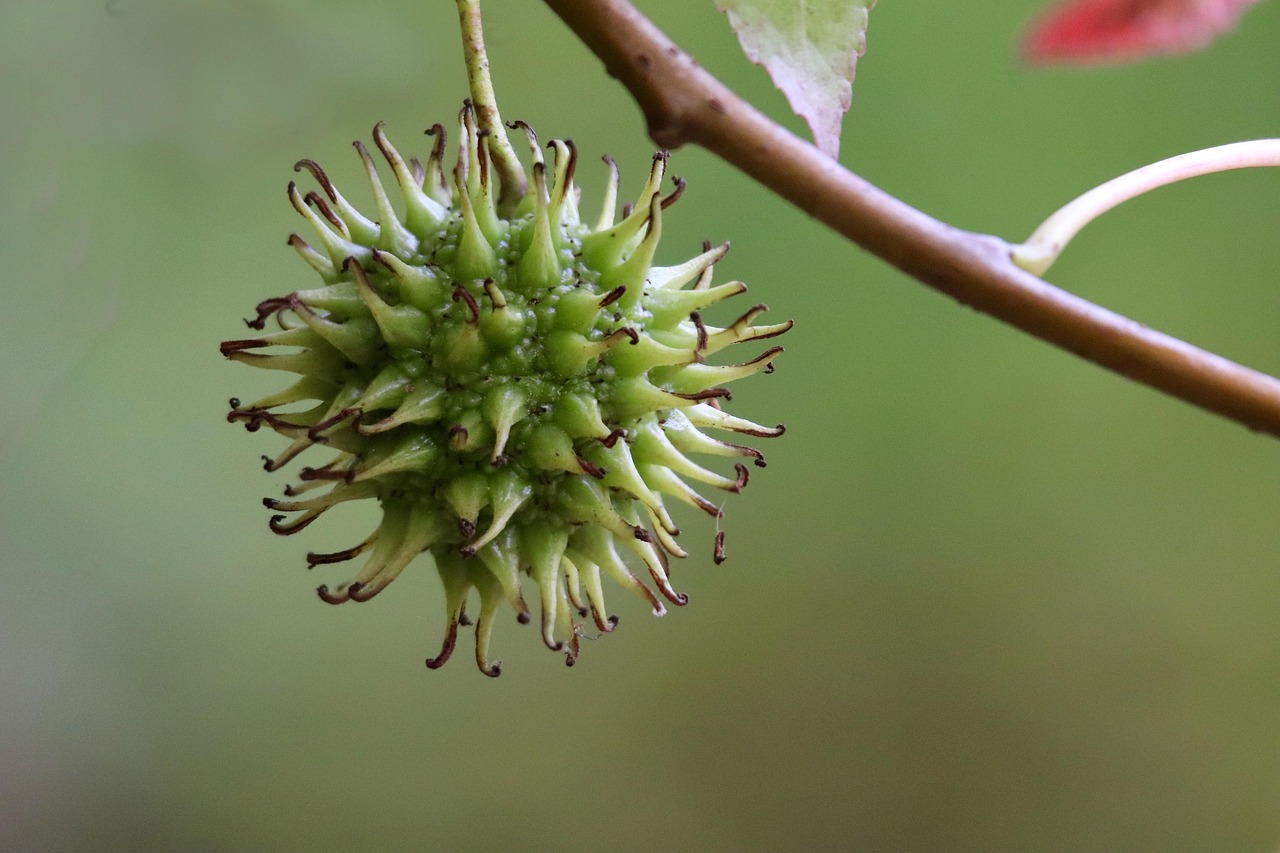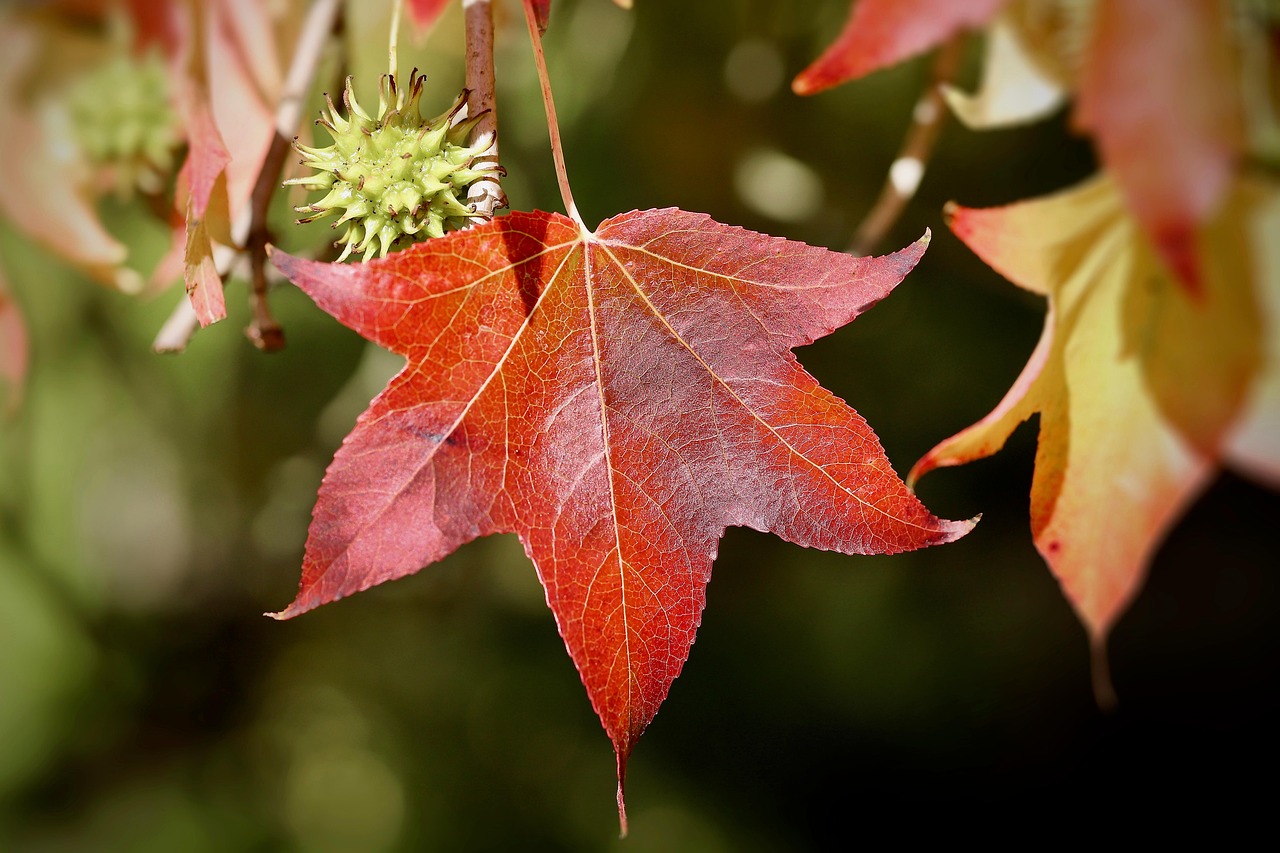The sweetgum tree, scientifically known as Liquidambar styraciflua, is a common deciduous tree native to the southeastern United States. It is recognized for its star-shaped leaves and distinctive spiky fruit. This tree not only provides shade but also adds aesthetic value to landscapes throughout the year.
Overview of the Sweetgum Tree

The sweetgum tree is a versatile species that can thrive in various soil types and environmental conditions. It tends to grow in moist, well-drained soils but is also adaptable to drier areas. Its height typically ranges from 60 to 100 feet, making it a significant presence in urban and rural landscapes alike.
One of the most notable features of the sweetgum tree is its unique foliage. The leaves are star-shaped with five to seven lobes. They change color with the seasons, providing a vibrant display ranging from green in summer to shades of yellow, orange, and red in the fall. This transformation makes the sweetgum a popular choice for planting in gardens and parks.
Another interesting aspect of the sweetgum tree is its fruit. The tree produces small, round, spiky seed balls that can be quite messy when they fall to the ground. These seed balls contain seeds that can be dispersed by wind and animals, allowing new trees to grow in various locations.
Habitat and Distribution
The sweetgum tree is primarily found in the eastern United States, stretching from southern Connecticut down to Florida and as far west as Texas and Missouri. It prefers warm, humid climates and is commonly found in forests, along riverbanks, and in wetlands. This tree can also tolerate some drought conditions once established.
In terms of habitat preferences, sweetgum trees often grow in mixed hardwood forests alongside other species such as oaks, maples, and hickories. They can be an important part of the forest ecosystem, providing habitat and food for a variety of wildlife.
Physical Characteristics
The sweetgum tree has several distinctive physical characteristics that set it apart from other deciduous trees. Here are some key features:
| Characteristic | Description |
|---|---|
| Height | 60 to 100 feet |
| Leaf Shape | Star-shaped with 5-7 lobes |
| Fall Color | Yellow, orange, red |
| Fruit Type | Spiky seed balls |
The bark of the sweetgum tree is another noteworthy feature. It is typically gray-brown with a rough texture and often develops a corky appearance as it matures. This characteristic can help identify the tree even in winter when the leaves have fallen.
Overall, the sweetgum tree plays an essential role in its environment, providing beauty and habitat while also being a valuable resource for landscaping and timber production.
Cultural Significance of the Sweetgum Tree
The sweetgum tree holds considerable cultural significance in various regions where it grows. Its unique characteristics and adaptability make it a popular choice for landscaping and urban forestry. Additionally, it has been used historically for various purposes, which have influenced its perception over time.
Historical Uses
Throughout history, indigenous peoples and early settlers utilized the sweetgum tree for several purposes. Some of these uses include:
- Medicinal Uses: The resin from the sweetgum tree was often used in traditional medicine. It was believed to have healing properties and was applied to cuts and wounds.
- Craftsmanship: The wood of the sweetgum tree is known for its durability and attractive grain. It has been used to create furniture, cabinetry, and various crafts.
- Fuel: The hardwood of the sweetgum tree burns well and was commonly used as firewood by early settlers.
Modern Landscaping
In contemporary landscaping, the sweetgum tree is admired for its aesthetic appeal throughout the seasons. Its vibrant fall colors and unique leaf shape make it a favorite choice for parks, residential areas, and commercial landscapes. Gardeners and landscapers appreciate the following qualities:
- Shade Provider: Due to its large canopy, the sweetgum tree offers excellent shade during the hot summer months.
- Wildlife Habitat: The tree supports various wildlife species, including birds and small mammals, making it a valuable addition to natural landscapes.
- Environmentally Friendly: As a deciduous tree, the sweetgum contributes to air quality improvement and soil health through its seasonal shedding of leaves.
Growth Conditions and Care
The sweetgum tree is relatively easy to grow, but certain conditions can enhance its growth and longevity. Here are some key factors to consider when planting a sweetgum tree:
Soil Requirements
The ideal soil for a sweetgum tree is loamy with good drainage. However, it can adapt to various soil types. Here are some specific soil conditions:
- pH Level: The tree prefers slightly acidic to neutral soils, with a pH range of 6.0 to 7.5.
- Drainage: Well-drained soils are essential to prevent root rot. Heavy clay soils should be amended with organic material to improve drainage.
Watering Needs
While sweetgum trees are relatively drought-tolerant once established, regular watering is crucial during their initial growth period. Here are some tips:
- Initial Watering: Water thoroughly after planting to help establish roots.
- Ongoing Care: Provide supplemental watering during dry spells, particularly in the first few years.
Pest and Disease Management
The sweetgum tree is generally resistant to many pests and diseases. However, it can occasionally encounter issues such as:
- Aphids: These small insects may feed on the sap, causing leaf curling.
- Leaf Spot: Fungal infections can cause discoloration on leaves but are usually not severe.
- Cankers: These can develop if the tree experiences stress from drought or injury.
Regular monitoring and maintaining good cultural practices can help manage these issues effectively.

Ecological Importance of the Sweetgum Tree

The sweetgum tree plays a vital role in its ecosystem. Its various characteristics contribute to the health and balance of the environment where it thrives. From supporting wildlife to improving soil quality, the sweetgum tree is an essential component in its natural habitat.
Wildlife Habitat
The sweetgum tree provides habitat and food for numerous species. Its features support a diverse range of wildlife, including:
- Birds: Many bird species utilize the tree for nesting and foraging. The seeds produced in the spiky fruit are a food source for birds such as finches and woodpeckers.
- Mammals: Small mammals, including squirrels and raccoons, often feed on the seeds and use the tree for shelter.
- Insects: The leaves and bark provide habitats for various insects, some of which are beneficial pollinators.
Soil Improvement
The presence of sweetgum trees can enhance soil quality in several ways:
- Leaf Litter: The fallen leaves decompose and enrich the soil with organic matter. This process improves soil fertility and structure.
- Root Systems: The extensive root systems help prevent soil erosion and promote water retention in the ground.
- Mycorrhizal Associations: Sweetgum trees often form beneficial relationships with mycorrhizal fungi, which enhance nutrient uptake for both the tree and surrounding plants.
Potential Challenges with Sweetgum Trees
While the sweetgum tree has many benefits, there are some challenges associated with its growth and management. Awareness of these issues can help homeowners and land managers make informed decisions.
Messy Seed Balls
The spiky seed balls produced by sweetgum trees can be a nuisance. When they fall to the ground, they can create a messy landscape. Here are some considerations regarding this issue:
- Cleanup Efforts: Regular cleanup may be necessary, especially in residential areas where children play or pets roam.
- Potential Hazards: The spiky seed balls can pose a tripping hazard for people walking on lawns or pathways.
Invasive Nature
In some regions, the sweetgum tree has been known to spread aggressively. This can lead to challenges in managing their growth within certain landscapes:
- Competition: Sweetgum trees may outcompete native plants for resources, potentially disrupting local ecosystems.
- Management Strategies: In areas where they become invasive, regular pruning and removal may be necessary to control their spread.
Cultivars and Varieties of Sweetgum Trees
There are several cultivars of the sweetgum tree that have been developed for specific traits. These varieties cater to different preferences and growing conditions:
- L. styraciflua ‘Rotundiloba’: Known for its rounded leaves, this cultivar is popular in landscaping due to its unique foliage.
- L. styraciflua ‘Slender Silhouette’: This variety grows tall and narrow, making it suitable for smaller spaces or urban environments.
- L. styraciflua ‘Gumball’: A hybrid known for producing fewer seed balls, making it a less messy option for homeowners.
Each cultivar offers distinct advantages, allowing gardeners to select varieties that best fit their landscape needs while minimizing potential challenges associated with the species.
Environmental Impact of Sweetgum Trees
Sweetgum trees have a significant environmental impact, contributing positively to their ecosystems. Their presence can enhance biodiversity and support various environmental processes. Let’s explore some of the key environmental benefits provided by sweetgum trees.
Carbon Sequestration
As deciduous trees, sweetgums play a crucial role in carbon sequestration. They absorb carbon dioxide from the atmosphere during photosynthesis, helping to mitigate climate change. Here are some important aspects of this process:
- Long Lifespan: Sweetgum trees can live for several decades, allowing them to store carbon over long periods.
- Large Biomass: The substantial size of mature sweetgum trees contributes to their ability to capture and store more carbon than smaller species.
Air Quality Improvement
Sweetgum trees also contribute to improved air quality. They provide benefits through:
- Oxygen Production: Through photosynthesis, sweetgum trees release oxygen, which is vital for all aerobic life forms.
- Pollutant Absorption: The leaves of sweetgum trees can absorb airborne pollutants, including sulfur dioxide and nitrogen oxides, thus improving overall air quality.
Water Management
The root systems of sweetgum trees play a key role in managing water resources. Their characteristics include:
- Water Retention: The tree’s roots help retain soil moisture, which is beneficial in preventing erosion and promoting groundwater recharge.
- Flood Mitigation: By absorbing excess rainwater, sweetgum trees can help reduce flooding in urban areas, making them valuable in landscape design.
Planting and Maintenance Tips for Homeowners

If you are considering planting a sweetgum tree in your yard or garden, here are some practical tips to ensure successful growth and maintenance:
Selecting the Right Location
Choosing the right spot for a sweetgum tree is critical. Consider the following:
- Space Requirements: Ensure there is enough space for the tree to grow to its full height and width without interference from buildings or other trees.
- Sun Exposure: Sweetgum trees thrive in full sun, so choose a location that receives at least six hours of sunlight per day.
Regular Pruning
To maintain the health and shape of your sweetgum tree, regular pruning is essential. Here are some guidelines:
- Timing: Prune during the dormant season (late winter or early spring) to minimize stress on the tree.
- Technique: Remove any dead or damaged branches and thin out crowded areas to improve air circulation.
Conclusion
The sweetgum tree is a remarkable species that offers numerous benefits, from its stunning seasonal foliage to its contributions to biodiversity and environmental health. Its adaptability makes it suitable for various landscapes, while its unique characteristics can enhance both aesthetic and ecological value.
Understanding the sweetgum tree’s growth conditions, maintenance needs, and ecological roles can empower homeowners and land managers to make informed decisions. Whether you are considering planting one in your yard or appreciating its beauty in a park, the sweetgum tree continues to be a valuable part of our natural world. Its striking appearance and essential contributions make it a noteworthy choice for enhancing both landscapes and ecosystems.
